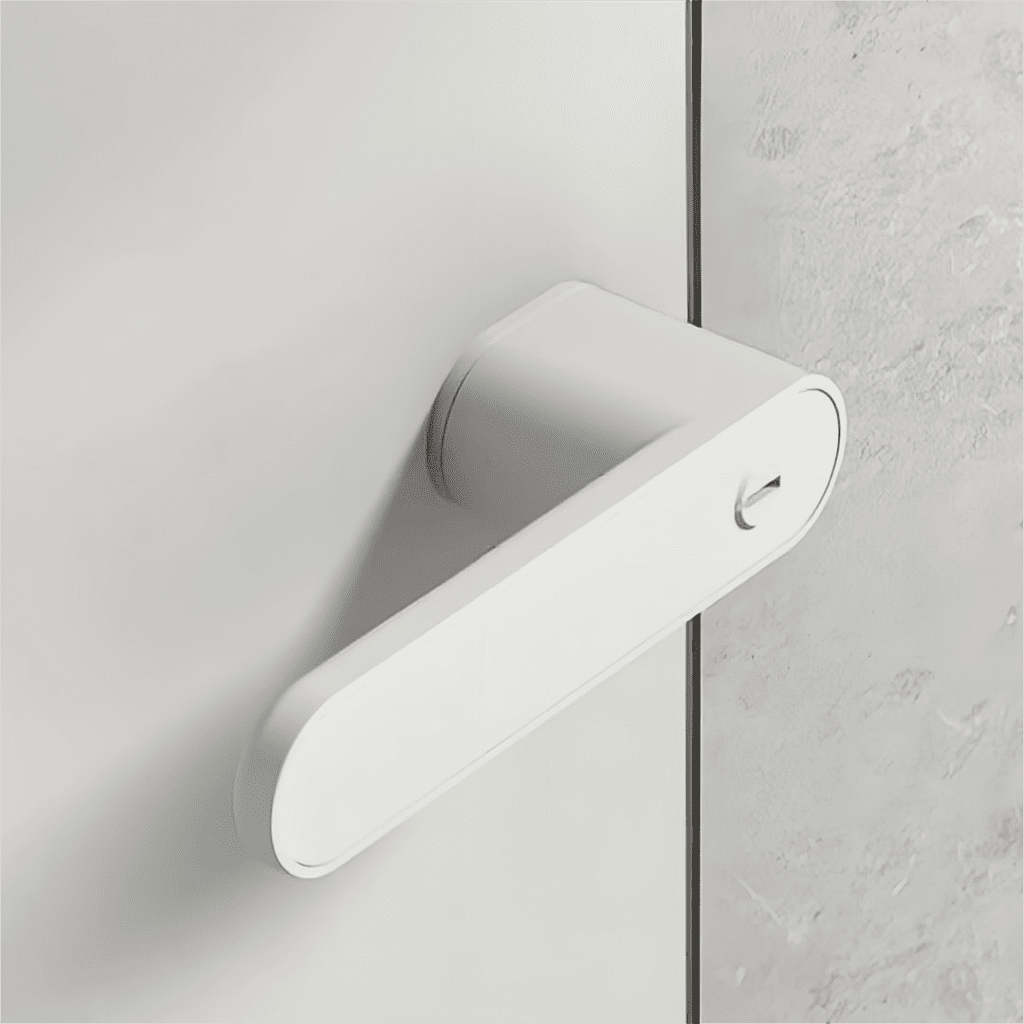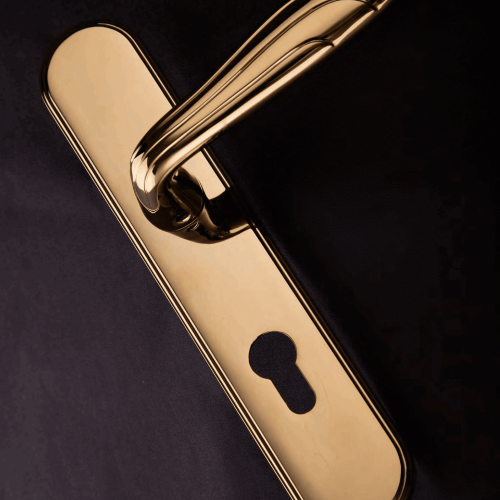Table of Contents
Door Handle Types and Materials
When it comes to home decor and design, even the smallest details matter. One often overlooked element is the door handle. Choosing the right door handle can enhance both the functionality and aesthetics of your doors. With a wide variety of door handle types and materials available in the market, it can be overwhelming to make the best choice. In this article, we will explore the different types of door handles and the materials used to craft them, providing you with valuable insights to make an informed decision.
1. Introduction
Before we delve into the specific types and materials, let’s understand the importance of door handles. Door handles serve as the primary means of opening and closing doors, ensuring ease of access and security. Beyond their practical purpose, door handles can also add style and personality to your home, complementing your interior design theme. By choosing the right door handle, you can elevate the overall look of your doors and make a lasting impression on anyone who enters your space.
2. Common Types of Door Handles
Door handles come in various designs, each offering a distinct style and functionality. Here are some of the most common types of door handles:

2.1. Lever Handles
Lever handles are a popular choice due to their ease of use, especially for individuals with mobility concerns. They feature a lever mechanism that can be pushed down or pulled up to open the door. Lever handles are available in different styles, ranging from contemporary to traditional, making them suitable for various interior design themes.
2.2. Knob Handles
Knob handles are classic and timeless. They feature a rounded knob that needs to be rotated to operate the door latch. Knob handles are often seen in traditional and vintage-inspired settings, adding a touch of elegance and sophistication to the doors.


2.3. Pull Handles
Pull handles are commonly used on sliding doors or large doors where a firm grip is required to slide or pull the door open. They offer a sleek and modern look and are available in various lengths and designs, allowing you to customize the appearance according to your preferences.
2.4. Flush Handles
Flush handles are designed to be discreet, creating a seamless and minimalistic look. They are often used on flush or sliding doors, where the handle is embedded into the door surface. Flush handles are ideal for contemporary and modern interiors, providing a clean and streamlined appearance.
3. Materials Used for Door Handles
Now that we have explored the different types of door handles, let’s shift our focus to the materials used in their construction. The choice of material not only affects the durability and strength of the handle but also contributes to its overall aesthetic appeal. Here are some common materials used for crafting door handles:
3.1. Brass
Brass is a popular material for door handles due to its timeless elegance and durability. It offers a warm and inviting look, making it suitable for both traditional and contemporary designs. Brass handles are known for their corrosion resistance and ability to withstand daily wear and tear, ensuring long-lasting performance.
3.2. Stainless Steel
Stainless steel is prized for its sleek and modern appearance, making it a preferred choice for contemporary interiors. It is highly resistant to rust, tarnish, and corrosion, making it suitable for high-humidity environments like bathrooms and coastal areas. Stainless steel handles are not only visually appealing but also easy to clean and maintain.
3.3. Aluminum
Aluminum handles are lightweight yet sturdy, making them a practical choice for various door types. They offer a clean and minimalist look, perfect for modern and industrial-inspired interiors. Aluminum handles are resistant to rust and corrosion, ensuring durability even in outdoor applications.
3.4. Glass
Glass handles add a touch of sophistication and elegance to doors. They are available in various designs, from transparent to frosted or textured glass, allowing for customization to match your interior style. Glass handles are often combined with other materials like metal or wood to create a unique and eye-catching look.
3.5. Wood
Wooden handles exude warmth and natural beauty, making them a popular choice for rustic or traditional interiors. They can be crafted from different types of wood, such as oak, mahogany, or walnut, each offering its unique grain pattern and color variations. Wood handles add a touch of craftsmanship and organic charm to any door.
4. Factors to Consider when Choosing a Door Handle
When selecting a door handle, it’s important to consider various factors to ensure the right fit for your doors and overall design concept. Here are key factors to keep in mind:
4.1. Style and Aesthetics
Consider the overall style and aesthetics of your space. Choose a door handle that complements the interior design theme, whether it’s modern, traditional, minimalist, or eclectic. The handle should blend seamlessly with the door and enhance the overall visual appeal.
4.2. Durability and Strength
Ensure that the chosen handle is durable and built to withstand daily use. Consider the material’s durability, corrosion resistance, and longevity. Opt for high-quality handles that can endure frequent opening and closing without compromising their functionality.
4.3. Maintenance
Consider the maintenance requirements of the door handle. Some materials may require regular polishing or cleaning to maintain their shine and appearance. Choose a handle that aligns with your lifestyle and maintenance preferences.
4.4. Ergonomics
Ergonomics play a crucial role in the usability and comfort of the door handle. Consider the grip and ease of use, especially if you have family members with special needs or mobility issues. Choose a handle that offers a comfortable grip and smooth operation.
5. Conclusion
Choosing the right door handle is an essential aspect of interior design. The type of handle and the material used can significantly impact both the functionality and aesthetics of your doors. Whether you opt for lever handles, knob handles, pull handles, or flush handles, ensure that they align with your design vision and meet your practical requirements. Additionally, select materials like brass, stainless steel, aluminum, glass,
wood, or a combination thereof that offer the desired durability, style, and maintenance properties.
In conclusion, door handles are not just functional components but also design elements that can elevate the overall look of your doors and interior spaces. By understanding the different types of door handles and the materials used in their construction, you can make an informed decision that aligns with your aesthetic preferences and practical needs. Consider factors such as style, durability, maintenance, and ergonomics when selecting the perfect door handles for your home.
6. FAQs
Here are some frequently asked questions about door handle types and materials:
6.1. What are the most popular types of door handles? The most popular types of door handles include lever handles, knob handles, pull handles, and flush handles.
6.2. Which material is best for a door handle? The best material for a door handle depends on your specific requirements. Brass and stainless steel are known for their durability, while aluminum offers lightweight strength. Glass and wood handles provide unique aesthetics.
6.3. How do I choose the right door handle for my home? To choose the right door handle, consider the style and aesthetics of your space, durability and strength of the material, maintenance requirements, and the ergonomic aspects of the handle.
6.4. Can I mix and match different types of door handles? Yes, you can mix and match different types of door handles within your home. It can add visual interest and create a unique design statement, as long as the handles complement each other and the overall interior theme.
6.5. How often should door handles be replaced? The lifespan of a door handle depends on factors such as usage, quality of materials, and maintenance. However, if you notice signs of wear, damage, or malfunction, it’s advisable to replace the door handle to ensure proper functionality and security.
